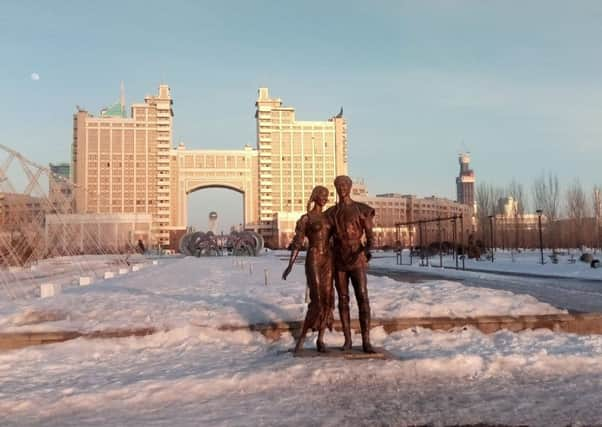Alan Pattullo: Postcard from Astana, new frontier for the Tartan Army


The architect of this dream, president Nursultan Nazarbayev, announced he was stepping down yesterday after three decades in power. If it was a shock to the locals, it was hard to tell.
They kept their heads bowed against the east wind, which continues to blow despite the political upheaval. The temperature has reached minus 20C during the night since Scotland arrived in the early hours of Monday morning. For a city that boasts so many citizens, and so many high-rise buildings where you presume people must live and work, it’s remarkable how empty the wide streets and public areas can feel.
Advertisement
Hide AdAdvertisement
Hide AdUnderstandably, people might not be too keen to venture out in the sub-zero temperatures that are a daily feature of life in the city. It is, after Ulaanbaatar, the capital of Mongolia, the coldest capital in the world.
If there’s a centre, I haven’t found it yet. Which means there doesn’t seem to be a natural gathering place for the 600 or so intrepid Scotland supporters expected to make their way here. One such fan, Fraser MacDonald, from Edinburgh, arrived yesterday, having travelled via Amsterdam and Poland. He will make his way from here to San Marino via Rome, driving from the Italian capital to San Marino.
Those who make it to Astana might view it as a badge of honour. Scotland have played many places, but never here and never under a roof, which will be closed – as it always is at this of year – when Scotland kick-off against Kazakhstan in the Astana Arena tomorrow.
The Tartan Army might struggle to find a fountain that hasn’t frozen over in order to indulge in their oft-seen day-of-game high-jinks. Let’s just hope no-one tries to steal the large steel ball on top of the vase-like tower that is the city’s predominant feature.
In the early spring sun, which did not dip down behind the numerous skyscrapers and shiny domes of mosques until after 7pm yesterday, the spread-out city is beautiful in a post-apocalyptic, futuristic and slightly eerie way. It’s not so much frozen in time as out of time. Why is it here?
It’s here, some say, as a vanity project of the now departing president, who in 1997 decreed that the title of capital city was transferring from Almaty to Astana. So began the rush to turn a remote outpost of the former Soviet Union into a symbol of Kazakhstan’s post-independence confidence. In the time since Scotland’s men’s team last featured in a major finals a new capital city has sprouted on the steppe.
Still the building continues. Cranes are as much a feature of the skyline as buildings.
But the truly remarkable aspect of Astana is not so much the city itself as what surrounds it. Nothing. From the 13th floor of my hotel it’s possible to gain some idea of the vast, rolling acres of prairie land that extends in all directions: north, south, east and west.
It’s easy to see why there was originally so little appetite to build here in the centre of the country, the ninth largest on earth.